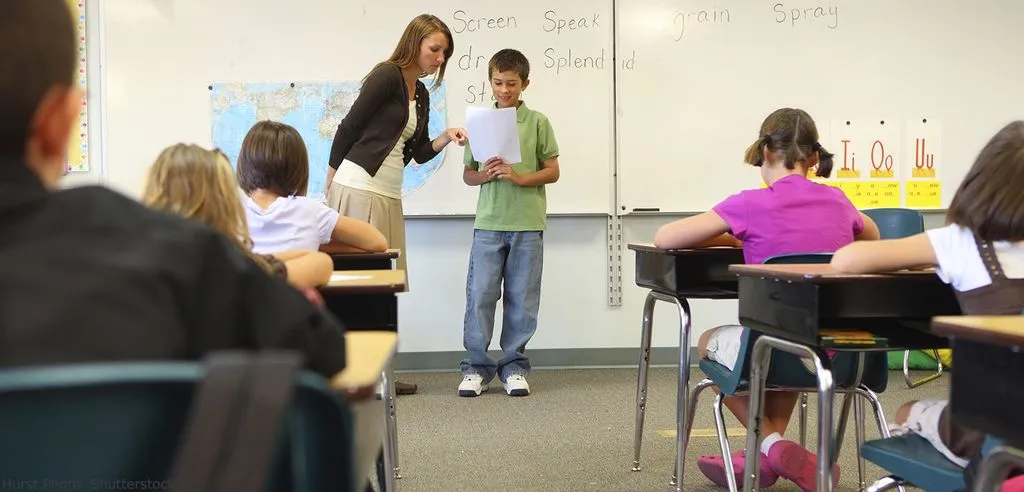.webp)
To stay effective and motivate their pupils in the quickly changing educational environment, teachers must constantly adapt and grow. An essential part of this journey is teacher professional development, which gives educators access to the newest techniques, methods, and information to improve their instruction. This blog will explore the meaning of teacher professional development, explain its importance, and provide tried-and-true methods for achieving it.
What Is Teacher Professional Development?
The term "teacher professional development" describes the continuous learning and preparation that educators get to enhance their efficacy, knowledge, and abilities as educators. It includes a broad range of activities such as online courses, peer collaborations, conferences, seminars, workshops, and self-directed learning. To improve the learning experiences of their pupils, the main objective is to make sure that teachers are up to date on educational trends, technology, and approaches.
Why Is Teacher Professional Development Important?

Enhances Teaching Skills
Developing teachers' professional growth is essential to improving their ability to teach. Using ongoing education, educators can enhance their pedagogical strategies, get fresh perspectives on classroom administration, and integrate inventive pedagogical approaches. As a result, students learn more effectively and get better results.
Keeps Teachers Updated
New pedagogical approaches, technological advancements, and research are always changing the world of education. By participating in professional development, educators can stay current on innovations and implement them in the classroom. In addition to helping children, this also keeps teachers inspired and involved in their work.
Promotes Career Growth
Professional development is crucial for educators to advance in their careers. It creates chances for advanced certificates, specialized teaching responsibilities, and leadership roles. Teachers can progress in their careers and make a greater impact on their schools and communities by consistently enhancing their knowledge and abilities.
Fosters Collaboration
Teachers can exchange ideas, tactics, and experiences through collaborative activities that are a common part of staff development. A more positive and effective learning environment results from teachers working together to build a sense of community and support. Additionally, it promotes the sharing of best practices, which eventually helps students.
5 Ways to Make Teacher Professional Development Effective
Careful preparation and execution are necessary for professional development for teachers to be effective. Here are five tried-and-true methods to make sure teacher professional development has a significant impact:

1. Tailor Professional Development to Teachers' Needs
Teachers' unique needs and objectives should be taken into account while designing professional development. Finding out where instructors need support and development can be aided by surveys or needs assessment work. Schools can make sure that the training is applicable and worthwhile by adjusting professional development programs to these demands.
2. Provide Ongoing Support and Follow-Up
One-time lectures or workshops are sometimes insufficient for significant career advancement. To reinforce learning and solve any obstacles instructors may have when applying new tactics, they must receive ongoing assistance and follow-up sessions. Regular check-ins, coaching, and peer mentorship are a few examples of this.
3. Encourage Active Learning
Passive learning techniques like lectures are less effective than active learning strategies like group discussions, simulations, and hands-on activities. Teachers should be able to practice and apply new abilities in real-world circumstances through active learning experiences that are part of their professional development.
4. Foster a Collaborative Culture
Effective professional growth requires fostering a culture of cooperation and ongoing development. Teachers should be encouraged by their schools to collaborate, pool resources, and help one another advance professionally. Collaborative learning and group learning can be effectively promoted through the use of professional learning communities, or PLCs.
5. Integrate Technology and Innovative Practices
Technology and cutting-edge methods can be added to professional development to increase its efficacy. Virtual workshops, webinars, and online courses offer accessible and adaptable learning options. Teachers may also be motivated to incorporate these innovations into their teaching methods by being introduced to the newest tools and technologies in education.
7 Effective Resources for Teacher Professional Development
The professional development of teachers is supported by a wealth of materials. Here are seven useful tools that teachers can use:

1. Online Learning Platforms
Teachers can take a variety of courses and certificates at their speed from online learning platforms such as Coursera, edX, and Khan Academy. These platforms give users access to top-notch material from reliable sources and authorities.
2. Professional Organizations
Conferences, webinars, and workshops are just a few of the professional development opportunities provided by associations like the International Society for Technology in Education (ISTE) and the National Education Association (NEA). These groups offer helpful tools and networking possibilities as well.
3. Educational Conferences
Teachers can stay up to date on the newest trends and best practices in education by attending conferences. Professional development and networking opportunities are offered by conferences like the National Council of Teachers of Mathematics (NCTM) Annual Meeting and the Annual Conference for Middle-Level Education (AMLE).
4. Peer Collaboration and Mentoring
Collaborating with peers and engaging in mentoring relationships can significantly enhance professional development. Teachers can learn from each other's experiences, share resources, and provide support. Schools can facilitate this by organizing peer observation sessions, study groups, and mentoring programs.
5. Professional Learning Communities (PLCs)
PLCs are gathering places for teachers to work together, exchange ideas, and do group projects. PLCs can be set up within districts or among schools, and they can concentrate on particular subjects or objectives. They offer a disciplined and encouraging setting for further career development.
6. Educational Blogs and Podcasts
Teachers can find a wealth of information and inspiration from educational podcasts and blogs. Thoughts on a variety of educational topics can be found on blogs like Edutopia and TeachThought, podcasts like "Cult of Pedagogy" and "The EdSurge Podcast" contain expert interviews and discussions on current concerns in education.
7. University and College Programs
Numerous schools and universities provide certificates, higher degree programs, and professional development opportunities for educators. Teachers can use their newly acquired knowledge in actual classroom settings with the help of these programs' practical components, which frequently feature in-depth learning opportunities.
Conclusion
To sum up, professional development for teachers plays a critical role in improving teaching abilities, keeping abreast of developments in the field, encouraging professional development, and encouraging collaboration among educators. Schools may make sure that professional development programs are successful and have an impact by adjusting to the requirements of teachers, offering continuous support, promoting active learning, cultivating a collaborative culture, and incorporating technology.
Investing in teacher professional development is seen by all educators and school administrators as an investment in the future of education. Investigate the tools and techniques provided in this tutorial to take the initial step right now. Try Our E-Class Blog today to receive additional advice and ideas on efficient professional development strategies. We can strengthen education for all children and empower teachers by working together.